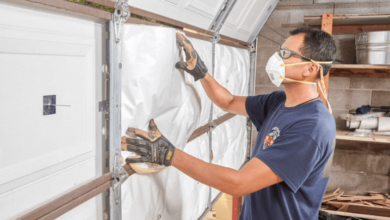Efficient Strategies for Organizing Your Belongings in a Self-Storage Unit

Renting a self-storage unit can be a practical solution for decluttering your home or safely storing items during a move. However, without proper organization, it can quickly become a chaotic mess. We will explore practical strategies to maximize space and maintain accessibility in your self-storage unit. Whether you’re storing seasonal items, furniture, or personal belongings, these tips will help you create an organized system that ensures your items are easy to locate and retrieve when needed.
Planning and Preparation
Before you start packing, take time to plan and prepare. Begin by assessing the items you intend to store and categorize them based on their size, fragility, and frequency of use. Create an inventory list to keep track of everything you plan to store. This step helps estimate the required storage space and guides you in selecting the proper storage containers and packing materials. Clear plastic bins are ideal as they allow you to see the contents without opening them, unlike cardboard boxes, which may degrade over time.
Read also: Roofing Maintenance Tips for McKinney, TX Homeowners
Efficient Packing Techniques
When packing your items for storage, adopt efficient techniques to optimize space and protect your belongings. Start with heavy and sturdy items at the bottom of boxes or bins, placing lighter and more delicate items on top. Use bubble wrap or packing paper to cushion fragile items and prevent breakage during transport and storage. Fill empty spaces in boxes with clothing or packing peanuts to minimize shifting and movement inside the containers. Label each box clearly on multiple sides with its contents and any handling instructions to facilitate easy retrieval later.
Maximizing Vertical Space
One key to efficient storage unit organization is effectively utilizing vertical space. Invest in sturdy shelving units or freestanding shelves to stack boxes and bins vertically. Place heavier items on lower shelves and lighter ones towards the top to prevent instability. Shelving prevents damage to items that could occur from stacking too high and makes it easier to access items without having to move everything around. Additionally, consider utilizing hooks or pegboards on the walls to hang items such as bicycles, tools, or seasonal clothing.
Creating Aisles and Walkways
Avoid filling every square inch of your storage unit with items. Instead, create clear aisles and walkways that allow you to navigate the space easily. Leave enough space between rows of shelving and stacks of boxes to walk comfortably and efficiently access items. This layout not only improves accessibility but also reduces the risk of damage to stored items when retrieving them. Leave a small workspace near the entrance where you can temporarily place items for sorting or packing without cluttering the main storage area.
Climate Control and Protection
Depending on what you’re storing, consider the climate control options offered by your self-storage facility. Extreme temperatures and humidity can damage sensitive items such as electronics, wooden furniture, and essential documents. Opt for a climate-controlled unit at AAA Storage Dripping Springs Texas of Dripping Springs if you’re storing items sensitive to temperature fluctuations. Use furniture covers, plastic sheeting, or pallets to remove items from the floor and protect them from dust and potential moisture seepage.
Security Measures
Ensuring the security of your stored items is crucial. Choose a self-storage facility with robust security features such as gated access, surveillance cameras, and on-site staff. When storing valuable or sentimental items, consider using a high-quality padlock or even a disk lock, which is more resistant to cutting and tampering. Position valuable items towards the back of the unit, hidden from view, to reduce the theft risk. Additionally, keep an inventory of useful items and consider obtaining insurance coverage specifically for stored belongings to protect against unforeseen events.
Regular Maintenance and Accessibility
Maintaining your self-storage unit regularly is essential to preserve the condition of your belongings. Periodically visit the unit to check for signs of pests, leaks, or damage to items caused by humidity or other environmental factors. Keep pathways clear and ensure that shelving units remain stable and secure. Rotate seasonal items to maintain accessibility and prevent them from becoming buried or forgotten. By staying organized and proactive in maintenance, you can prolong the life of your stored items and minimize the risk of unexpected damage.
Documentation and Records
Documenting the contents of your self-storage unit can provide peace of mind and streamline retrieval processes. Maintain a detailed inventory list that includes descriptions, photographs, and the condition of each item stored. Store a digital or physical copy of this inventory outside the storage unit, such as in a secure cloud or at home. Update the inventory regularly as items are added or removed from storage. This documentation helps manage your belongings efficiently and serves as valuable documentation for insurance claims or in the event of a loss.
Organizing your belongings in a self-storage unit requires thoughtful planning and strategic packing to maximize space and accessibility. By categorizing items, using efficient packing techniques, and optimizing vertical space, you can create a well-organized storage unit that makes it easy to locate and retrieve your belongings when needed. Regularly assess and update your inventory to ensure efficient use of space over time. With these strategies, your self-storage experience can be convenient and stress-free, whether you’re storing items short-term or for an extended period.




